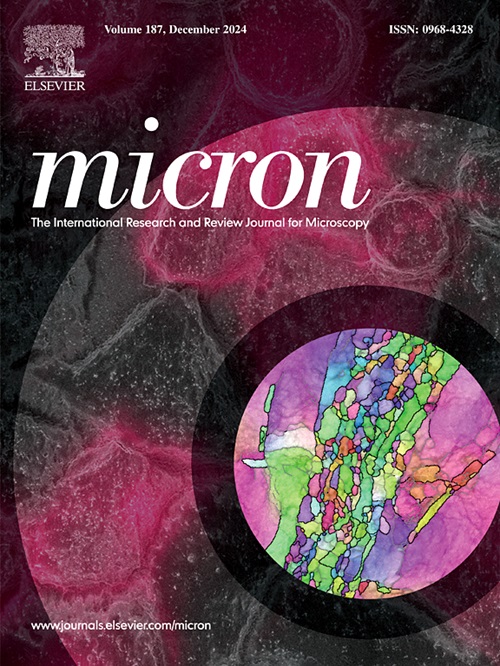旋转磁力显微镜研究纳米级磁泡在零磁场下的稳定性。
IF 2.2
3区 工程技术
Q1 MICROSCOPY
引用次数: 0
摘要
气泡磁织构在零磁场中的稳定性由于其在自旋电子器件中的潜在应用而引起了人们的广泛关注。在此,我们使用自制的旋转磁力显微镜(MFM)来观察NiO/Ni/Ti薄膜的磁畴演变。在100 K的面外磁场作用下,磁条畴衰减为孤立的磁泡,当外加磁场降至零时,磁条畴重新出现。通过在0.42 T的外部磁场中旋转样品,磁条转变为纳米级磁泡域。这种转变是由静磁能最小化驱动的,同时伴随着交换能和塞曼能的增加。经典铁磁海森堡模型有效地描述了外加磁场作用下磁条到磁泡的转变。由于长程静磁相互作用,致密气泡域在零磁场下保持稳定。我们介绍了一种在零磁场中构造气泡域的简单方法。这项工作为未来基于气泡的自旋电子器件的发展提供了一个有前途的材料平台。本文章由计算机程序翻译,如有差异,请以英文原文为准。
Stabilization of nanoscale magnetic bubbles in zero magnetic field by rotatable magnetic force microscopy
The Stabilization of bubble magnetic textures in zero magnetic field has garnered significant attention due to its potential application in spintronic devices. Herein, we employed a home-built rotatable magnetic force microscopy (MFM) to observe the evolution of magnetic domains in NiO/Ni/Ti thin films. Magnetic stripe domains decay into isolated magnetic bubbles under an out-of-plane magnetic field at 100 K, and magnetic stripes reappear when the external magnetic field is reduced to zero. By rotating the sample within an external magnetic field of 0.42 T, the magnetic stripes transform into nanoscale magnetic bubble domains. This transition is driven by the minimization of the magnetostatic energy, accompanied by an increase in both the exchange energy and the Zeeman energy. The classical ferromagnetic Heisenberg model effectively describes the magnetic stripe-to-bubble transition under an applied magnetic field. The dense bubble domains remain stable in zero magnetic field due to long-range magnetostatic interaction. We introduce a straightforward method for constructing bubble domains in a zero magnetic field. This work presents a promising material platform for the future development of bubble-based spintronic devices.
求助全文
通过发布文献求助,成功后即可免费获取论文全文。
去求助
来源期刊

Micron
工程技术-显微镜技术
CiteScore
4.30
自引率
4.20%
发文量
100
审稿时长
31 days
期刊介绍:
Micron is an interdisciplinary forum for all work that involves new applications of microscopy or where advanced microscopy plays a central role. The journal will publish on the design, methods, application, practice or theory of microscopy and microanalysis, including reports on optical, electron-beam, X-ray microtomography, and scanning-probe systems. It also aims at the regular publication of review papers, short communications, as well as thematic issues on contemporary developments in microscopy and microanalysis. The journal embraces original research in which microscopy has contributed significantly to knowledge in biology, life science, nanoscience and nanotechnology, materials science and engineering.
 求助内容:
求助内容: 应助结果提醒方式:
应助结果提醒方式:


